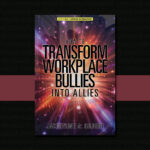The following is a guest blog post from Susan Gillpatrick, LPC, CTS, CEAP, Centerstone Crisis Management Strategies
Employers are responsible for providing a safe work haven for employees. Yet research indicates that 30-50 percent of adults report they have been bullied at work.
Bullying is not just conflict, but psychological abuse – a form of workplace violence. The National Institute for Occupational Safety and Health (NIOSH) defines workplace violence as any physical assault, threatening behavior or verbal abuse that occurs in the work setting. Examples could be threats, obscene phone calls, an intimidating presence and harassment of any kind – all of which can lead to psychological trauma.
Harassment can include bullying, and bullying can include harassment. Another definition by The International Labor Organization identifies workplace bullying as, “incidents where staff are abused, threatened or assaulted in circumstances related to their work, including commuting to and from work, involving an explicit or implicit challenge to their safety, well being or health.”
Bullying is aggressive behavior that maximizes power and control, intending to hurt, threaten or frighten another person. NIOSH categorizes four types of workplace violence. Type Two is called worker-on-worker, and is where the most common bullying behaviors fall. This exchange of violence can occur between any two employees who work together or have worked together.
Targets of bullying experience anxiety, depression, burnout and even Post-Traumatic Stress Disorder (PTSD). Abusive behaviors also invite severe damaging consequences for the organization, including increased absenteeism and turnover, communication breakdown, reduced quality in work and litigation.
Another bullying behavior is indirect, or veiled, threats. These types of threats can be control tactics for the workplace bully and can take the form of threatening body language or offensive gestures. Or, they may simply be statements that aren’t as explicit as direct threats. An example could be a comment such as, “She’ll be sorry she said that.”
Veiled threats should be carefully documented. While a bully may be able to say that a veiled threat was misinterpreted or no harm was meant, any veiled threats should be taken as a warning sign of additional potential violence.
All companies should create a zero tolerance anti-bullying policy. This policy should be part of the wider commitment to a safe and healthful working environment and should have the full support of top management. Employees should be educated and trained about all types of workplace violence, including bullying behaviors that can produce significant physical and mental problems. They should be made aware of how to report such behaviors within the workplace, and when witnessed or reported, the bullying behavior should be addressed immediately.





Thank you so very much Ms Gilbert for this post. I believe that the only way that there will be any measure of change is through awareness. I am now entering my fifth month of sick leave due to very extreme and severe workplace harassment. The harassment began as bullying and escalated to extreme privacy invasions, open threats, prank home phone calls, vandalism, indecent voyeurism and more.
HR has been completely passive and have even taken steps to threaten me after I’d spoken up. They immediately sent me for a so called random computer generated drug test and claimed that the computer selected my name. They then posted a threatening quote openly in a company news leter stating that statements made to catch everyone may catch no one.They began a guilt campaign and further emotionally assaulted me. I am a nervous wreck and my life has fallen apart. I can’t even seem to recover enough to find work elsewhere. I stay in bed when I can with my window now covered to block out light. I am in disbelief and have been diagnosed with PTSD. I have children.
Please continue to raise awareness. Your statements and detailed description of what happens is spot on and though scarey, it is absolutely spot on. My goodness, it is exactly what happened to me. We just want to work in peace. I am finding that most of us who are in these situations tend to value our work and much of our identities are wrapped in working and being ethical. Please continue. Thank you and God Bless.